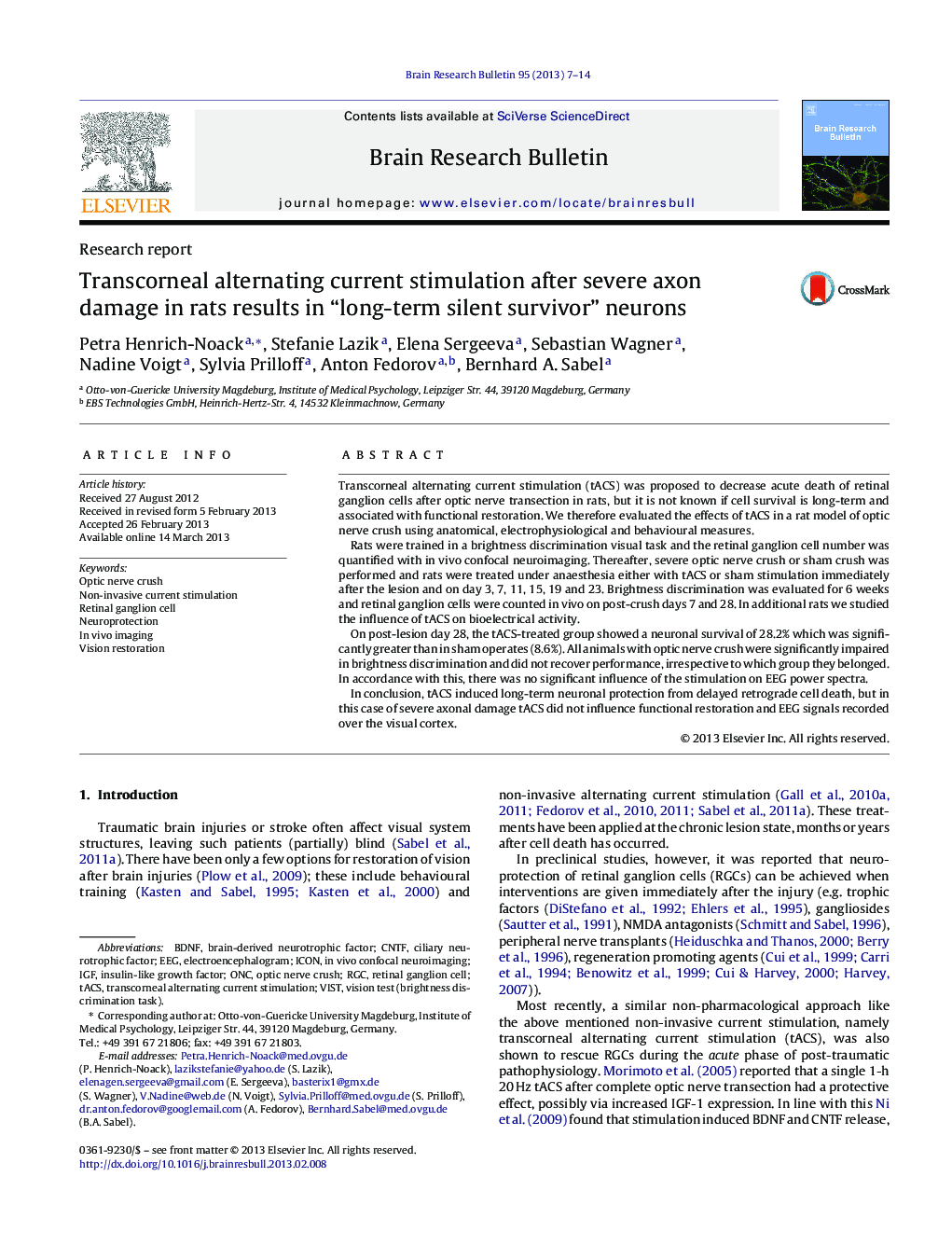| Article ID | Journal | Published Year | Pages | File Type |
|---|---|---|---|---|
| 6261894 | Brain Research Bulletin | 2013 | 8 Pages |
Transcorneal alternating current stimulation (tACS) was proposed to decrease acute death of retinal ganglion cells after optic nerve transection in rats, but it is not known if cell survival is long-term and associated with functional restoration. We therefore evaluated the effects of tACS in a rat model of optic nerve crush using anatomical, electrophysiological and behavioural measures.Rats were trained in a brightness discrimination visual task and the retinal ganglion cell number was quantified with in vivo confocal neuroimaging. Thereafter, severe optic nerve crush or sham crush was performed and rats were treated under anaesthesia either with tACS or sham stimulation immediately after the lesion and on day 3, 7, 11, 15, 19 and 23. Brightness discrimination was evaluated for 6 weeks and retinal ganglion cells were counted in vivo on post-crush days 7 and 28. In additional rats we studied the influence of tACS on bioelectrical activity.On post-lesion day 28, the tACS-treated group showed a neuronal survival of 28.2% which was significantly greater than in sham operates (8.6%). All animals with optic nerve crush were significantly impaired in brightness discrimination and did not recover performance, irrespective to which group they belonged. In accordance with this, there was no significant influence of the stimulation on EEG power spectra.In conclusion, tACS induced long-term neuronal protection from delayed retrograde cell death, but in this case of severe axonal damage tACS did not influence functional restoration and EEG signals recorded over the visual cortex.
⺠RGC survival is increased long-term by tACS after axonal trauma. ⺠The neuroprotective effect is significant at late time-points rather than during acute cell death. ⺠Increased neuronal survival is not translated into improved visual performance. ⺠Unlike in humans, tACS has no influence on bioelectrical brain activity of rats, possibly due to anaesthesia.
